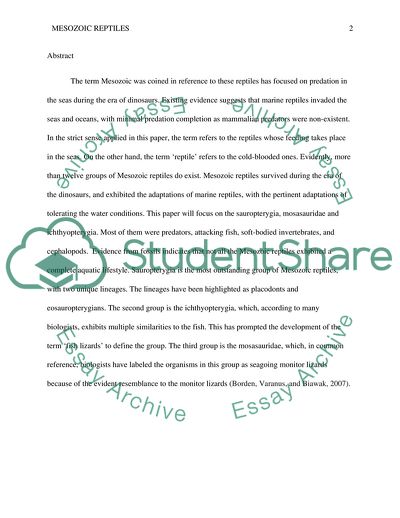Cite this document
(Mesozoic Marine Reptiles Term Paper Example | Topics and Well Written Essays - 2000 words, n.d.)
Mesozoic Marine Reptiles Term Paper Example | Topics and Well Written Essays - 2000 words. https://studentshare.org/biology/1813430-mesozoic-marine-reptiles
Mesozoic Marine Reptiles Term Paper Example | Topics and Well Written Essays - 2000 words. https://studentshare.org/biology/1813430-mesozoic-marine-reptiles
(Mesozoic Marine Reptiles Term Paper Example | Topics and Well Written Essays - 2000 Words)
Mesozoic Marine Reptiles Term Paper Example | Topics and Well Written Essays - 2000 Words. https://studentshare.org/biology/1813430-mesozoic-marine-reptiles.
Mesozoic Marine Reptiles Term Paper Example | Topics and Well Written Essays - 2000 Words. https://studentshare.org/biology/1813430-mesozoic-marine-reptiles.
“Mesozoic Marine Reptiles Term Paper Example | Topics and Well Written Essays - 2000 Words”. https://studentshare.org/biology/1813430-mesozoic-marine-reptiles.


